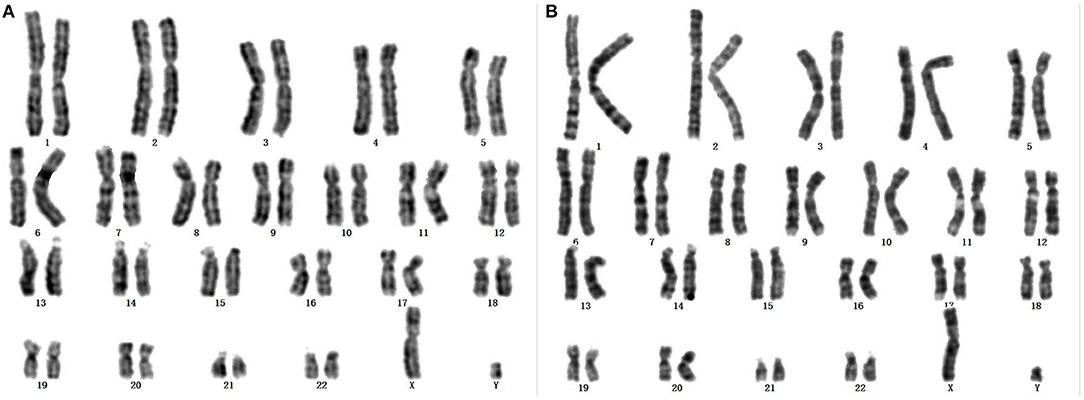Karyotype analysis refers to the pairing and grouping of chromosomes to reveal whether the organism accords with the inherent chromosomal characteristics, to determine if the organism has chromosomal abnormalities. Karyotype analysis can detect whether there are abnormalities in chromatin length, centromere position, the ratio of long and short arms, and the presence or absence of satellites. Many rare diseases have obvious manifestations of chromosomal structural abnormalities, making it a strategy to determine the cause of diseases from a macroscopic perspective of genetics.
Abnormalities in Chromosome Number
More or less chromosomes can lead to the occurrence of some rare diseases. Patients with Down syndrome show abnormal mental development and multiple organ malformations due to the presence of an extra chromosome 21. And the deletion or partial deletion of the X chromosome in females leads to Turner syndrome, which manifests abnormal development of reproductive organs.
Abnormalities in Chromosome Structure
Chromosomal structural abnormalities include duplication, translocation, inversion, and insertion, etc. Loss of the long arm of chromosome 7 or of the long arm of chromosome 15 causes Williams's syndrome and Prader-Willi Syndrome, respectively, both of which present with intellectual disability. Walker-Warburg syndrome, acute leukemia and muscular dystrophy-dystroglycanopathy, type a, 1 are all related to chromosome 9 inversion. In addition, Potocki-Lupski syndrome is characterized by an additional copy of a small segment of chromosome 17 onto chromosome 11.
Microdeletion / Microduplication of Chromosome
The missing or replication of a small fragment of DNA leads to the microdeletion or microduplication of chromosomes. Typical examples include the 2q23.1 deletion which causes seizures and developmental delays and 15q11–q13 deletion relevant to Angelman syndrome.
Karyotype analysis is an essential and fundamental step for the diagnosis of rare diseases. Our company has a mature diagnostics development system that provides you with a high-level research team and the necessary resources to support the karyotype analysis for rare disease.
1.Canonical Karyotyping
The cells from patients with rare diseases or animal models are retrieved to analyze the karyotype by canonical G-band method, or C-, Q-, R-, T-band methods.
2.Spectral Karyotyping
To overcome the drawbacks of canonical analysis, spectrometry uses different dyes to detect subtle chromatin abnormalities with higher sensitivity and specificity.
3.Digital Karyotyping
Big data based on next-generation sequencing technology is used to analyze genome structure, ploidy number, gene mutation, copy number variation, etc.
With the participation of genetic experts possessing rich project experience, our company provides one-stop rare disease karyotype analysis service to help you quickly complete the genetic testing related to rare diseases.





